Development as an artist
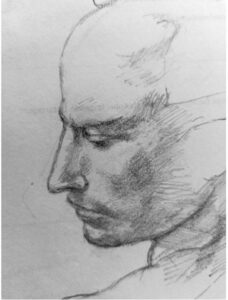
Around 36 years ago I decided to end my career as a scientist. I wanted to pursue my interest in painting sincerely. During my visit at Boston University as an “International Scholar” I took part in courses at the Department of Visual Arts. I also regularly visited and worked at the “drawing study” (Fogg Museum, Harvard University) to copy master drawings. These two forums allowed me to acquire practical and theoretical knowledge of criteria applied in the field of professional art. I became very familiar with works of masters such as: Ingres, Raphael, Leonardo da Vinci, Michelangelo, Pontormo, Rembrandt, Daumier, Degas, etc.
I followed the principle of painters during the Renaissance. Namely, that the craft of painting should start with a thorough study and copy of master drawings. The ability to copy drawings of the masters leads to a deep understanding of art by looking carefully at details which are inspectable in the way how skilled draughtsmen are expressing beauty as practical accomplishment. Criteria which the artists apply in their work cannot be taught academically. Intellect and language are too rough as tools to express the fine nuances of their drawings. In that sense I was forced to develop a vocabulary for drawing “organic” lines, proportions of the human figure, aesthetics of the composition, etc by practicing drawing over many years.
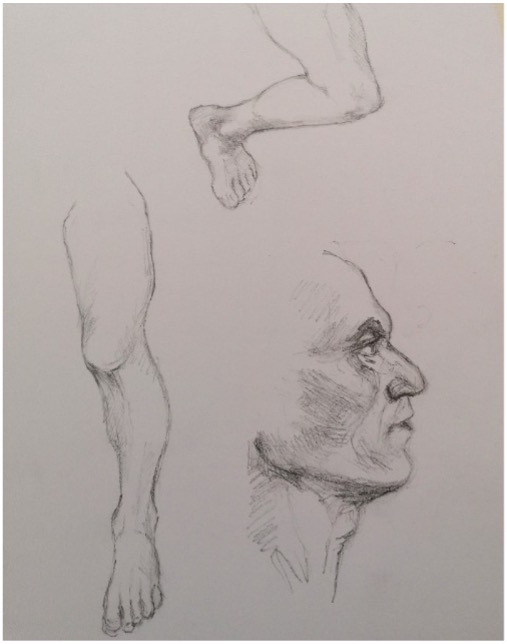
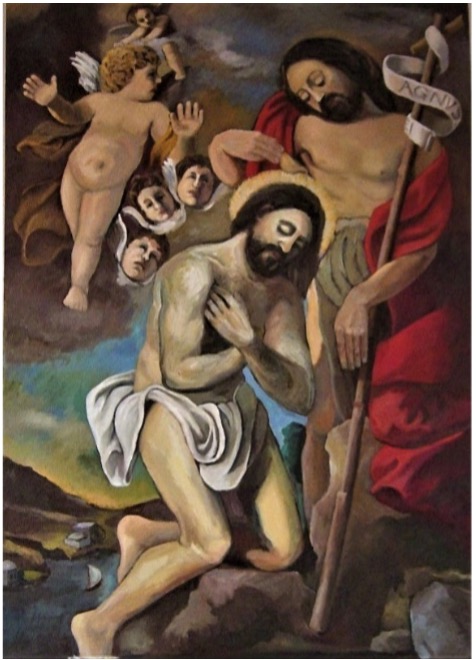
After about four years of carrying out drawing exercises daily I started to incorporate colours into my work. The painting below shows an example of my first attempts to apply colours in the style of Renaissance paintings.
At that time, I was particularly impressed by Titian’s use of colours and subtle tonalities.
After being involved in drawing and painting figuratively for many years I developed an interest in the work of impressionists and post-impressionists. In the course of this development, I painted landscapes, still lives and portraits, which are comparable in style to the works of impressionists.
I was particularly interested in the works of Paul Cezanne and Edgard Degas. Paintings by Henri Matisse with their inclination to exaggerate intensities of colours were also important for my development as a colourist. I freed myself increasingly from the restrictive demands of figurative painting and improved my ability to find “strong” combinations of colour. The term “strong” refers to an ensemble of colours comparable to the accords in music of J. S. Bach. It reaches a level of unusual friction between its elements and at the same time offers strong sensations of harmony.
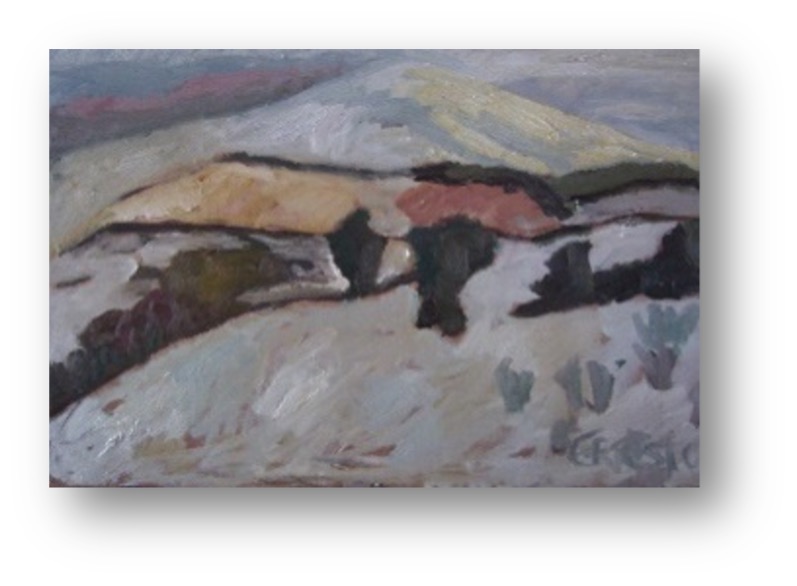
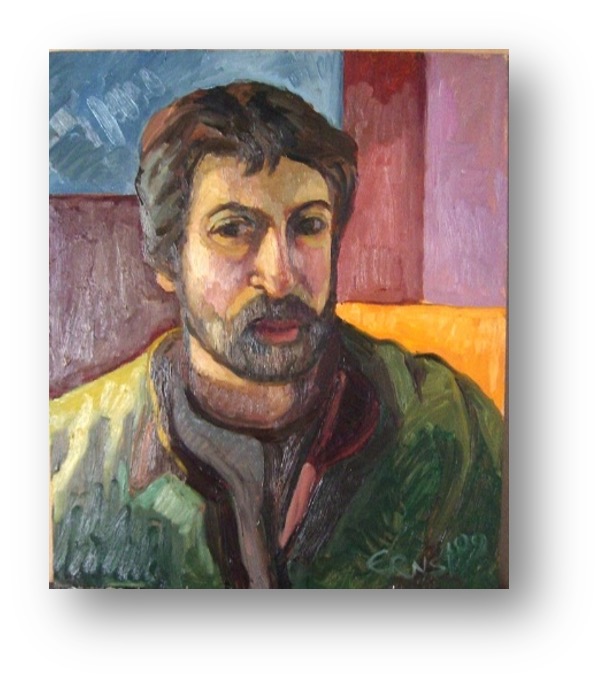
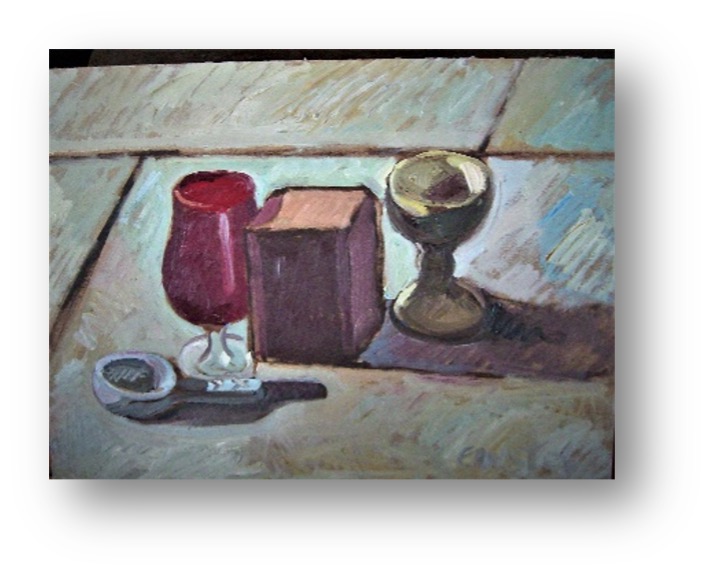
Paul Klee also had a strong influence on my development as a painter. He demonstrated in his mosaics of colours and through his creative and abstract compositions a nearly childlike understanding of the work of an artist. I appreciate his commitment to the freedom of academic and figurative painting.
Another influence during my later development was Giorgio Morandi. He impressed me with his ability to see objects in still lives as figures free of meaning, sitting in a mystical atmosphere of light.
Richard Diebenkorn is in my opinion one of the most influential painters of modern times. His very sensitive and disciplined way of producing abstract paintings shows his love of colours and together with his unusual compositions he influenced my understanding of abstract art.
The work of Peter Krawagna with his careful construction of simple compositions and his deliberate intent to keep things simple, motivated me to find a compromise between complexity and simplicity in my paintings.
Latest development of my painting
My paintings are products of unplanned aesthetics. Typically, I begin by covering the canvas with a mixture of technical gelatine and gesso mixed with dark pigments. The brush strokes seem to create a rhythm of the whole surface of the screen. I immediately react to the visual aspects of colours, when I put down the first dots of paint. I react intuitively to what the painting reveals during the ongoing process of creating an image. It is very important to me to avoid banalities and constructions which refer to intellectual thoughts. This allows me to let my immediate intuition work. It is also my goal that each part of the painting should fulfil the requirements of being aesthetically pleasing. At the same time, the details must fit in well with the whole painting. This procedure causes tension which I try to keep alive during the whole creative process.
To be able to be as flexible as possible, I usually use powder of pure pigments which I mix with different media. This way I can use the colours “à la prima” as well as in form of overlapping layers with different density of colour pigments. To accentuate different structures of the painting I also use charcoal and dry pastel crayons.
When intellectual thoughts and deliberations give way to sensitivity and intuition, my work as a painter comes to life.
